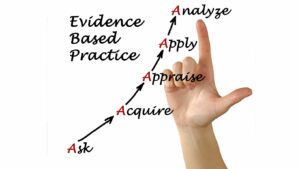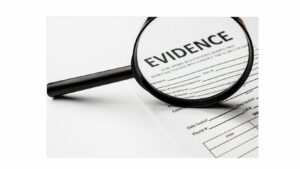In today’s data-driven world we are living in, quantitative evidence stands as a cornerstone of informed decision-making. whether we like it or not. Whether in business, healthcare, sports or public policy, numbers, data and
statistics provide a solid foundation for identifying trends, measuring outcomes, making predictions and recognizing patterns. This type of evidence is not only precise but also replicable, making it invaluable for validating hypotheses and guiding strategic actions, the basics of empiricism.
Quantitative evidence empowers organizations to move beyond intuition and anecdote, leveraging hard data to uncover insights and drive progress. By focusing on measurable variables and statistical analysis, it ensures that conclusions are backed by empirical data, fostering credibility and trust. In a landscape where data is king, understanding how to effectively gather and interpret quantitative evidence is essential for staying ahead of the curve.
Quantitative Evidence
Quantitative evidence is characterized by several core attributes that enhance its reliability and utility within various disciplines. These characteristics ensure the integrity and applicability of numerical data in decision-making processes.
Objectivity
Quantitative evidence maintains objectivity by relying on standardized metrics and methodologies. This objectivity eliminates personal biases and subjective influences, ensuring data accuracy. For instance, in clinical trials, researchers use precise measurement tools to collect data, providing clear and unbiased results. This objectivity is crucial for making informed, evidence-based decisions.
Measurability
Measurability signifies that quantitative evidence can be quantified and expressed in numerical terms. It allows for precise comparisons and statistical analyses. In marketing, for example, measurability enables the calculation of return on investment (ROI) through metrics like conversion rates and sales figures. This quantitative clarity assists in evaluating performance and making strategic adjustments.
Reproducibility
Reproducibility ensures that quantitative evidence can be consistently replicated under the same conditions. Scientists often validate experiments by reproducing results to confirm accuracy. In education, standardized tests exemplify reproducibility by yielding consistent scores across different administrations. This characteristic reinforces credibility and trust in the data collected.
Methods Of Gathering Quantitative Evidence
Quantitative evidence is essential for data-driven decision-making. The methods for gathering this type of evidence vary based on the discipline and objectives.
Surveys
Surveys collect data from a predefined group by asking structured questions. They provide quantitative insights into people’s behaviors, opinions, and characteristics (e.g., customer satisfaction, market research).
Surveys can be administered online, by phone, or in person. They offer scalability, enabling the collection of large datasets from diverse populations, which allows for statistical analysis and pattern recognition.
Experiments
Experiments involve manipulating one or more variables to observe effects on certain outcomes. This method tests causal relationships under controlled conditions (e.g., drug efficacy trials, consumer behavior studies). Experiments often use randomization to eliminate biases. They create replicable and valid results, contributing valuable evidence for establishing causal links and drawing conclusions based on observable data.
Secondary Data Analysis
Secondary data analysis uses existing data collected for other purposes. Sources include governmental databases, previous research studies, and industry reports. This method leverages large datasets that are often publicly available, saving time and resources. Researchers can identify trends, benchmark findings, and build on prior work, enhancing the robustness and depth of quantitative evidence without the need for new data collection.
 Analyzing Quantitative Evidence
Analyzing Quantitative Evidence
Quantitative evidence stands as a cornerstone in the realm of data-driven decision-making. Its objectivity and reproducibility ensure that decisions are based on solid, empirical data rather than subjective intuition. This approach not only enhances credibility but also fosters trust among stakeholders.
By leveraging methods such as surveys, experiments, and secondary data analysis, organizations can gather and interpret valuable insights. These techniques allow for the identification of trends and the measurement of outcomes, which are crucial for making informed predictions and strategic decisions.
Ultimately, the ability to effectively analyze quantitative evidence equips organizations with a competitive edge. In a world increasingly reliant on data, mastering the collection and interpretation of quantitative evidence is indispensable for driving progress and achieving success across various fields.



